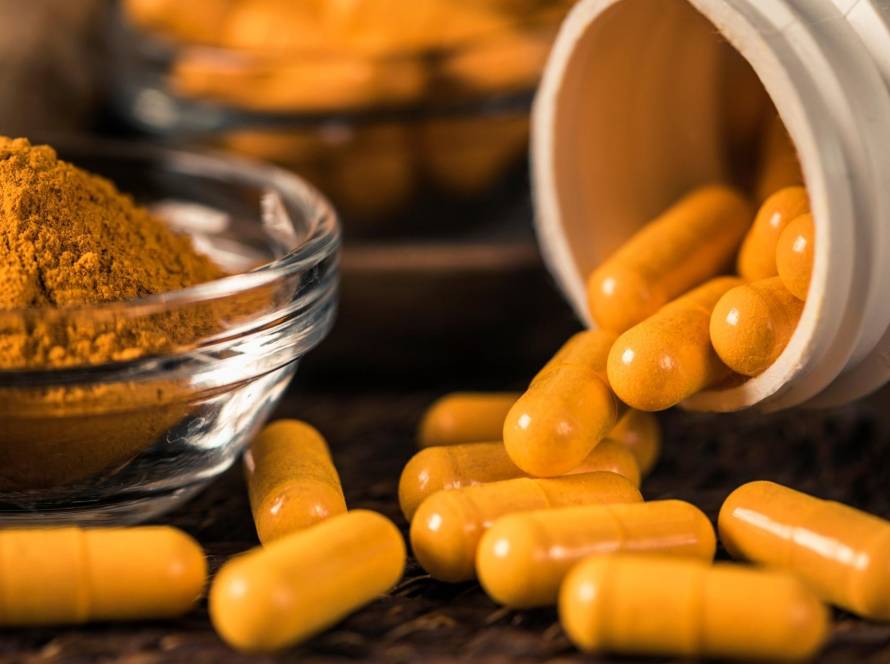Does iron make you age faster? Scientists now pay close attention to this question as research shows that iron accumulates progressively with age. This buildup links to numerous age-related diseases.
This piece takes a detailed look at iron supplements’ hidden effects. We learn about iron’s impact on life expectancy and what current science reveals about managing iron levels to live longer.
Why iron is essential for the body
Iron is one of the most important minerals in our body. It serves as the life-blood for many vital body processes. Our body’s iron distribution shows that approximately 70% exists in hemoglobin within red blood cells and myoglobin in muscle cells. This pattern explains iron’s fundamental role in human physiology.
Iron’s role in oxygen transport and energy metabolism
Iron’s main job involves moving oxygen throughout the body. Iron binds oxygen in the lungs and delivers it to tissues as a vital part of hemoglobin. This process ensures cellular breathing and energy production. The body can’t make enough hemoglobin without proper iron levels, which leads to poor oxygen delivery to organs and tissues.
On top of that, iron has a vital role in myoglobin, a protein that stores and moves oxygen inside muscle cells. Muscle cells need quick oxygen access especially when we have physical activity.
Iron does more than transport oxygen, it acts as a vital helper for many enzymes that produce energy. Iron takes part in oxidative phosphorylation, which turns nutrients into adenosine triphosphate (ATP), our body’s energy currency. Iron-containing cytochrome enzymes help electron transport during ATP creation, making iron essential to generate cellular energy.
Support for immune and brain function
Iron makes a big difference in how well our immune system works. Iron deficiency can hurt neutrophil activity and T-lymphocyte growth, which weakens our body’s defense against infections.
The brain needs iron to develop and function well. Children who lack iron during infancy associate with worse thinking skills in childhood. Iron helps create DNA, produce neurotransmitters and coat neurons with myelin. Adults who don’t have enough brain iron often face mental decline, mood changes, irritability and higher depression risk.
Consequences of iron deficiency: anemia and fatigue
Iron deficiency moves through different stages, from empty iron stores to iron-deficiency erythropoiesis and finally to iron deficiency anemia (IDA). IDA affects much of the world’s population, about 25%, making it a serious global health issue.
Common symptoms of iron deficiency anemia include:
- Constant tiredness and weakness;
- Breathing problems, especially during exercise;
- Pale skin and brittle nails;
- Dizziness and headaches;
- Problems focusing and reduced mental function.
Severe iron deficiency can cause serious problems if left untreated. These include heart issues, slower child development and pregnancy complications. Young children and babies with iron deficiency might develop learning problems due to cognitive and psychomotor issues.
Iron keeps us alive, but balancing it properly can be tricky. Too little iron causes anemia, but as we’ll see next, having too much iron brings its own health risks.
How excess iron can harm the body
The human body doesn’t have a quick way to get rid of extra iron, unlike other nutrients. This makes knowing how to manage iron levels vital for our health and can affect how we age.
The body’s limited ability to excrete iron
Our bodies don’t have no active physiological system to remove excess iron. The body manages to keep iron levels balanced by controlling how much we absorb through the small intestine. We lose small amounts through sweat, menstruation, falling hair, skin renewal and intestinal cell shedding. The body exchanges about 1 mg of iron each day. This tight control shows why iron builds up in our bodies as we age and might lead to age-related diseases.
Iron and the Fenton reaction: oxidative stress explained
Extra iron creates health risks through its pro-oxidant properties. Free iron takes part in the Fenton reaction, which turns hydrogen peroxide into highly reactive hydroxyl radicals. These reactive oxygen species (ROS) harm essential cell parts like DNA, proteins and membrane lipids. This damage speeds up how cells age and stands out as one of the main ways iron might make us age faster.
Tissue damage and inflammation from iron overload
Iron overload damages organs over time and causes cardiomyopathy, liver cirrhosis, endocrinopathies and arthritis. When transferrin (the protein that carries iron in blood) becomes full, labile plasma iron forms. This reactive iron quickly creates oxygen free radicals that break down proteins and DNA, which leads to cell death. The excess iron also triggers inflammation in tissues. This creates a harmful cycle that causes more tissue damage.
Iron’s role in mitochondrial dysfunction
The effect of iron on mitochondria, our cells’ power plants, raises serious concerns about longevity. Too much iron in mitochondria disrupts energy production, harms mitochondrial DNA and changes how mitochondria look. Healthy mitochondria are the foundation of cell function and longevity. Iron-induced damage to mitochondria represents a key way that iron overload might speed up aging. Scientists have connected this mitochondrial damage to brain diseases like Alzheimer’s, Parkinson’s and Huntington’s.
What science says about iron and aging
Scientists have found more evidence linking iron metabolism to aging. Their research shows fascinating ways this vital mineral might affect how long we live.
Does iron age us? Evidence from genetic studies
Genetic research makes a strong case for iron’s role in speeding up aging. Studies using Mendelian randomization showed that genetically predicted higher serum iron levels associate with faster epigenetic aging across several clock measurements. Each standard deviation rise in serum iron associates with faster GrimAge, HannumAge and Intrinsic epigenetic age. The same patterns show up in transferrin saturation measurements, which suggests iron metabolism directly affects biological aging markers.
Animal studies on iron restriction and lifespan
Scientists have found that limiting iron extends lifespan in many species. Drosophila lives 20% longer when given dietary tea extracts that block iron absorption. Research with rodents showed that iron-rich diets speed up aging through oxidative stress and inflammation. Less iron slows down this process.
Iron and mTOR: the growth-longevity tradeoff
Iron works like a growth factor that triggers mTOR (mammalian Target Of Rapamycin), which controls aging. This protein kinase connects nutritional signals with growth needs and determines lifespan. Iron chelation stops mTOR activity and low iron levels turn it down. mTOR also controls iron metabolism, creating a two-way relationship that helps explain aging mechanisms.
Iron and the formation of lipofuscin (cellular junk)
Iron plays a vital role in creating lipofuscin, waste material in cells that marks aging. This yellow-brownish pigment builds up in lysosomes of neurons and cardiac myocytes that live a long time. Research confirms that iron speeds up lipofuscin formation in human glial cells and rat heart cells, while removing iron prevents this buildup. Lipofuscin becomes harmful by attracting more iron, which creates a surface that produces more free radicals in an endless cycle.
Who should be cautious with iron supplements
Some people face higher risks from iron supplements because their bodies naturally store more iron. We need to identify these groups to prevent complications from too much iron.
Men and postmenopausal women: higher risk of iron accumulation
Men’s bodies and those of women after menopause store more iron than menstruating women. The prevalence of iron deficiency anemia is 2% in adult men and 2% in women over 50. In spite of that, doctors often prescribe unnecessary iron supplements to this group. Their iron levels slowly rise over time without monthly menstrual blood loss. Women after menopause often show increasing serum ferritin levels as their estrogen drops. This change might increase their risk of osteoporosis and heart disease.
People with hemochromatosis or family history of iron overload
Hereditary hemochromatosis affects about one million Americans. Studies show most people absorb only 10% of dietary iron, but those with hemochromatosis absorb up to 30%. This excess absorption guides iron to build up in organs. The buildup can cause liver cirrhosis, heart problems, diabetes and arthritis.
Risks of unnecessary supplementation
Taking iron supplements above 45mg daily without doctor supervision can harm us seriously. High doses can reduce how much zinc our body absorbs and cause stomach problems. Toxicity shows up as damage to our heart, metabolism and nervous system. Doses between 20-60 mg/kg cause moderate toxicity. Amounts above 60 mg/kg can make our circulation collapse, according to data.
How to test our iron levels: ferritin and transferrin saturation
We need several tests to get a full picture of our iron levels. These include ferritin (which shows iron storage), serum iron, total iron-binding capacity (TIBC) and transferrin saturation. Inflammation can make ferritin levels look higher than they really are, so doctors must look at all these results together.
Why iron supplements are often overprescribed
Problems with iron overprescription are systemic, especially for elderly patients. Research shows that 70% of patients taking prescribed iron didn’t need it. Doctors should never assume anemia comes from iron deficiency without running complete tests. This becomes crucial when stomach bleeding might point to other serious conditions that need investigation.
We want enough iron to keep our body working well but not so much that it speeds up aging. This balance shapes how well we age, though many people overlook it. Smart monitoring and customized iron management could help us age better and stay healthier longer.


